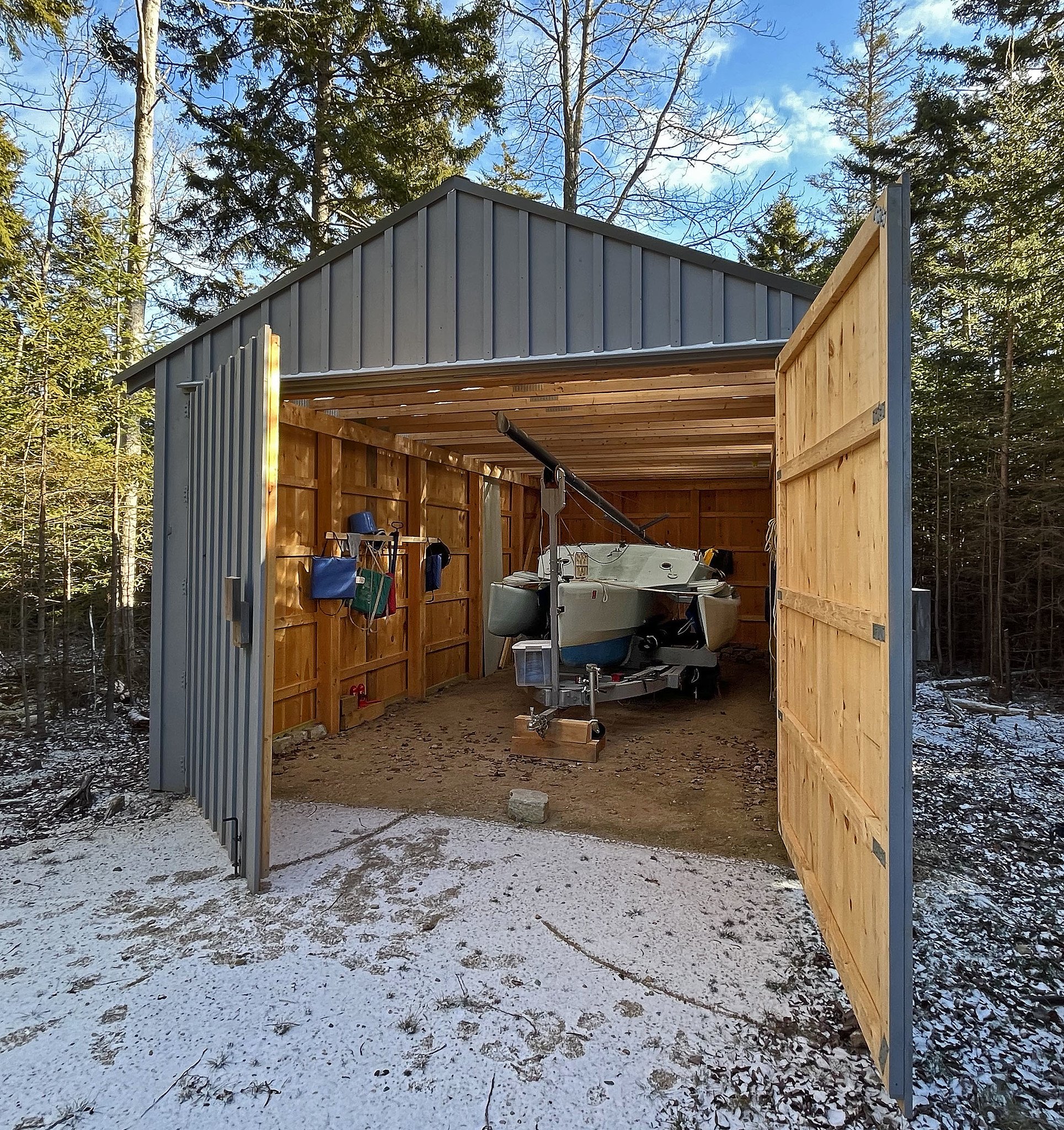Take a cold and bright January day that makes you zip up all the way; spread untrammeled snow that makes you squint; drop in naked trees that hallelujah into blue-glazed skies, and add a familiar old structure that seems to have been there forever – and let your eyes feast.
Here you see the Friend Memorial Public Library in the shadows of two immense sugar maples whose leaves shade the lawn in summer and bejewel the area in fall. The main structure (approximately the front half) of the Library was built in 1912, when the trees apparently were planted as ten-foot teenagers. The building has been extended and there are plans to further enlarge the Library.
In the first Comment space you’ll see a snow-covered lawn and a workshop amidst a crowd of wild paper birch trees: white-on-white-on-white. The shop was built in the early 1900s and reportedly was used to make wooden decoys for duck hunting, among other things.
According to the literature, sugar maples can live 300-400 years and wild paper birches can live 80-140 years. (Images taken in Brooklin, Maine, on January 13 [shed] and 14 [Library], 2025.)







































































































